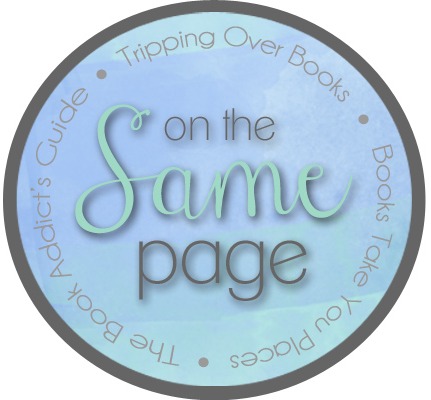 American Gods • Neil Gaiman
American Gods • Neil Gaiman
As you all probably know, Alyssa is like the one true Gaiman fan. She adores his writing and his stories and his wisdom and his hair and himself. However, since AMERICAN GODS is, I believe, the only work of his she hasn’t read, and Brittany and I are always looking to expand our knowledge of the Gaiman-verse, we decided to make this our February book. I’m so glad we did. It’s dense and dark and thought-provoking, but it was also amazing.
Since I have an abiding love of mythologies of all kinds, and since AMERICAN GODS uses those same mythologies to weave this incredible story, I thought I’d highlight a few of the major players for my post. Note: In the book, these gods go by different names (except for a few, but it’s not a huge spoiler to reveal them), so I’m not giving away any secrets. Shadow, the main character, deals with gods, but doesn’t know who they all are right away. It makes for a super fun guessing game, in addition to an engaging and mysterious story about belief, family, religion, and America.
Hat-tip to the artists who drew these amazing pictures, too! Y’all are so talented, I can’t even.
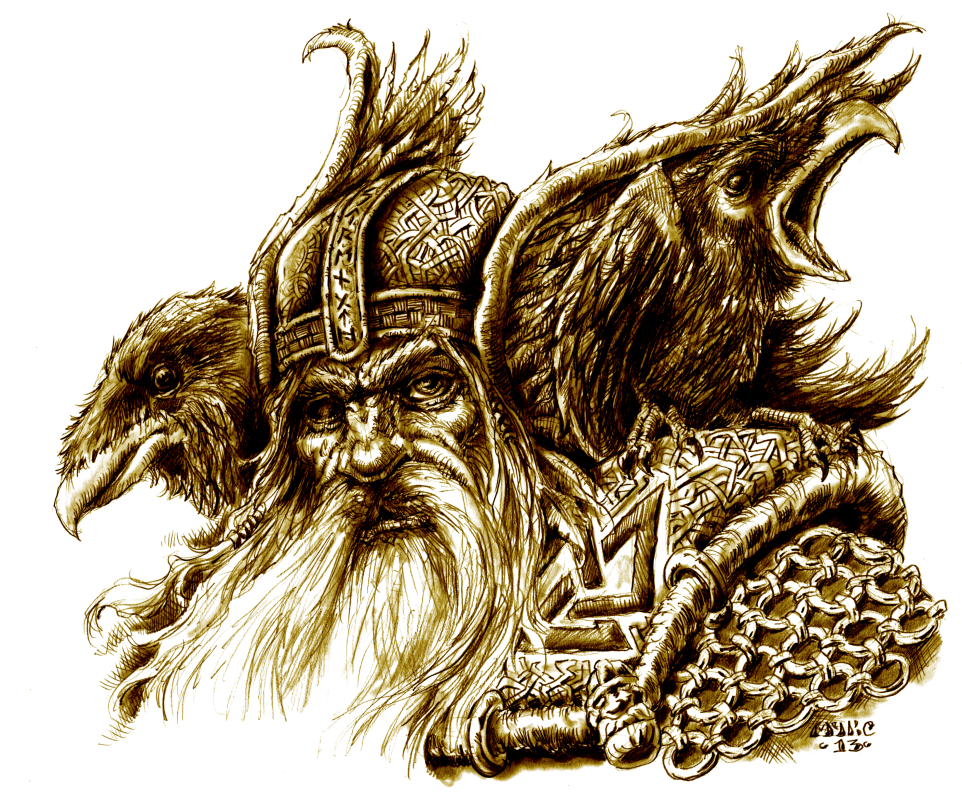 Odin
Odin
Odin, All-Father. He’s the Big Kahuna of Norse mythology. He rules over the kingdom of Asgard, and his constant companions and emissaries of sorts are his ravens, Huginn and Muninn–thought and memory. They gather information for him and serve as his eyes and ears. Eyes especially, because Odin sacrificed one of his own in his never-ending, relentless pursuit of wisdom. He’s married to the goddess Frigg and is the father of many other gods besides. Odin is associated with knowledge, war, poetry and nobility, and he rules over the kingdom of Valhalla, the Norse hall of the dead.
(Image © vikingmyke)
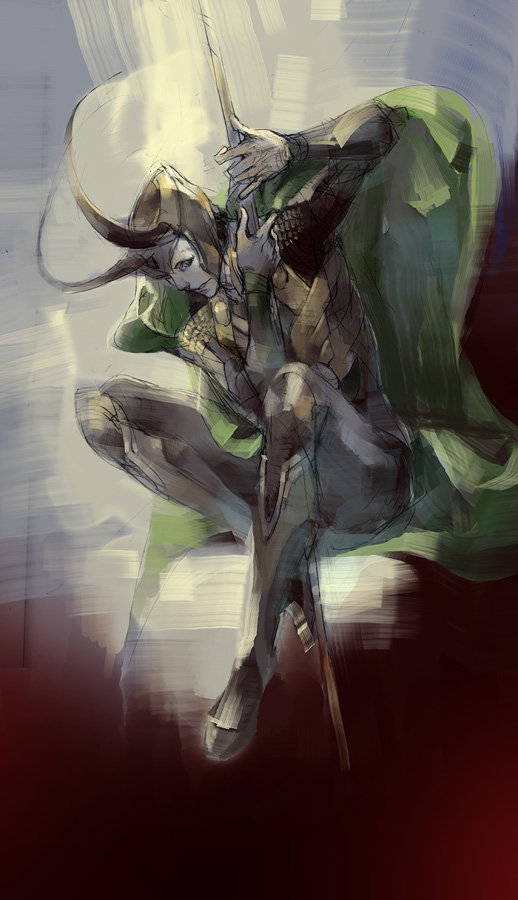 Loki
Loki
Loki is one of the most well-known gods in the Norse pantheon. His popularity can probably be, at least in part, owed to Tom Hiddleston, who portrays him in the movies based on the Marvel comics (bc DUH HIDDLES). But he’s been a devious, charming figure in mythology for much longer. Loki is the Norse trickster god. He’s mischievous, self-absorbed, and ultimately dangerous. Loki will help you out, but is always looking out for Number 1, aka himself. He is also referred to sometimes as Jotun Loki, I think just as a means of distinguishing his more human aspect from his giant one. His father was a giant, and so Loki will sometimes appear in that form.
(Image © iammovan)
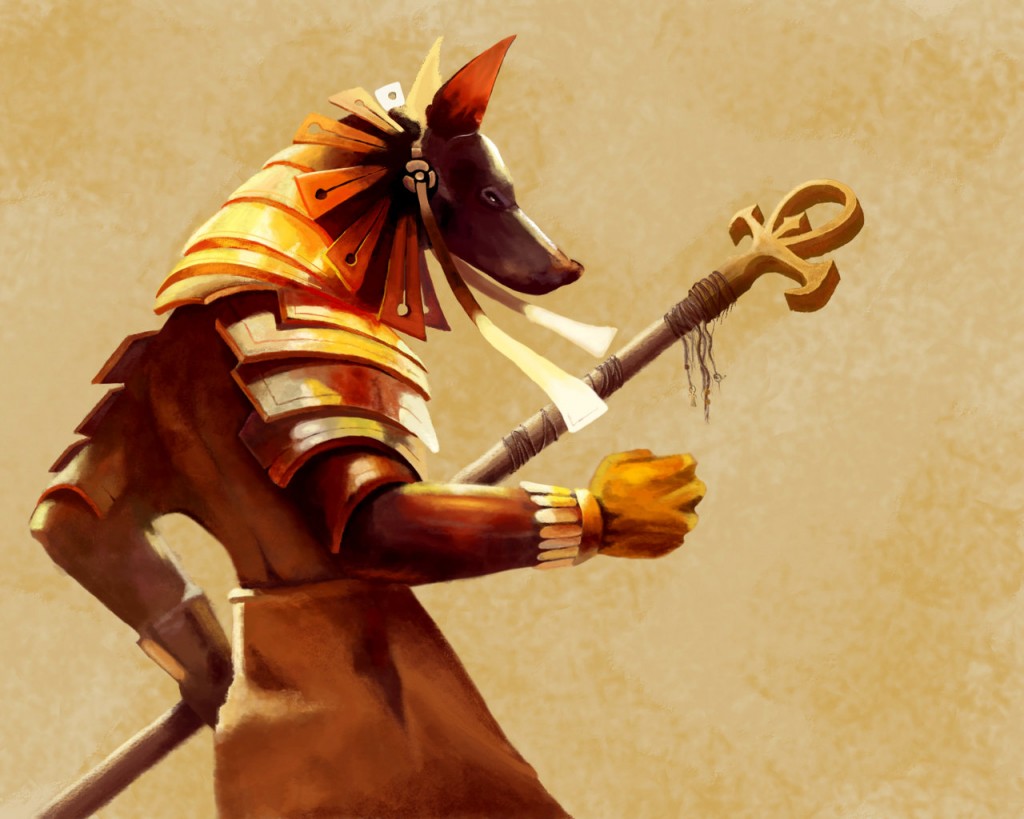 Anubis
Anubis
If I had to pick a mythology that serves as the most MAIN mythology in AMERICAN GODS, it would be Norse, probably. But in terms of quantity? Egyptian mythology REPRESENTS. The god Anubis is the Egyptian god of the afterlife, mummification, and the protector of tombs, which would explain his having the head of a jackal (you know, like a guard dog/animal). There is a well-known aspect of death in Egyptian mythology involving the weighing of a soul’s heart against a feather, a representation of truth. If the heart/soul weighed more than the feather, the soul was denied access into Duat, or the Egyptian afterlife. Anubis oversaw this very important aspect of death in Egyptian mythology.
(Image © mribby294)
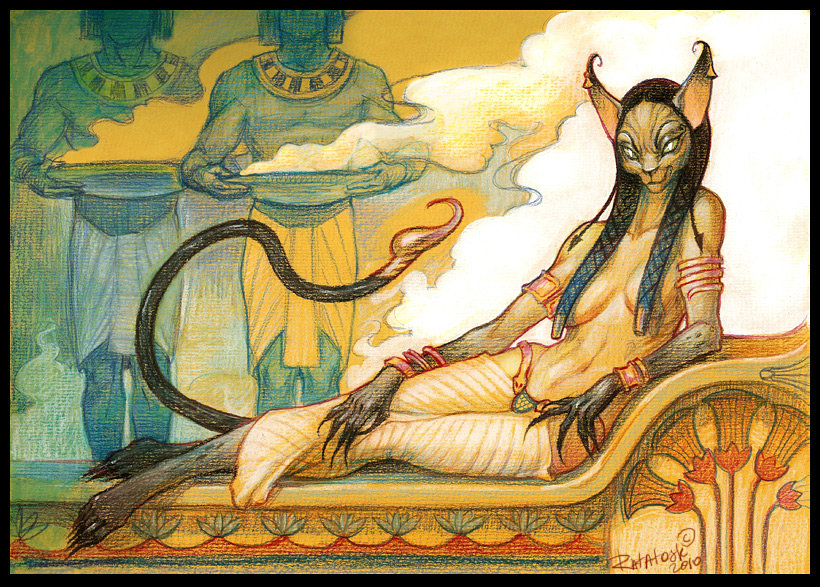 Bast
Bast
Bast, sometimes seen as Bastet, is the Egyptian cat goddess. Her two names reflect two incarnations: In earlier mythologies, as Bast, she was a goddess of war and appeared more as a lioness. Later, as Bastet, she became more peaceful and…well, cat-like, and is known now as the goddess of cats–sacred in Ancient Egypt–protection, love, music, joy, and dance. Total opposites, no?
(Image © Ratatosk-A)
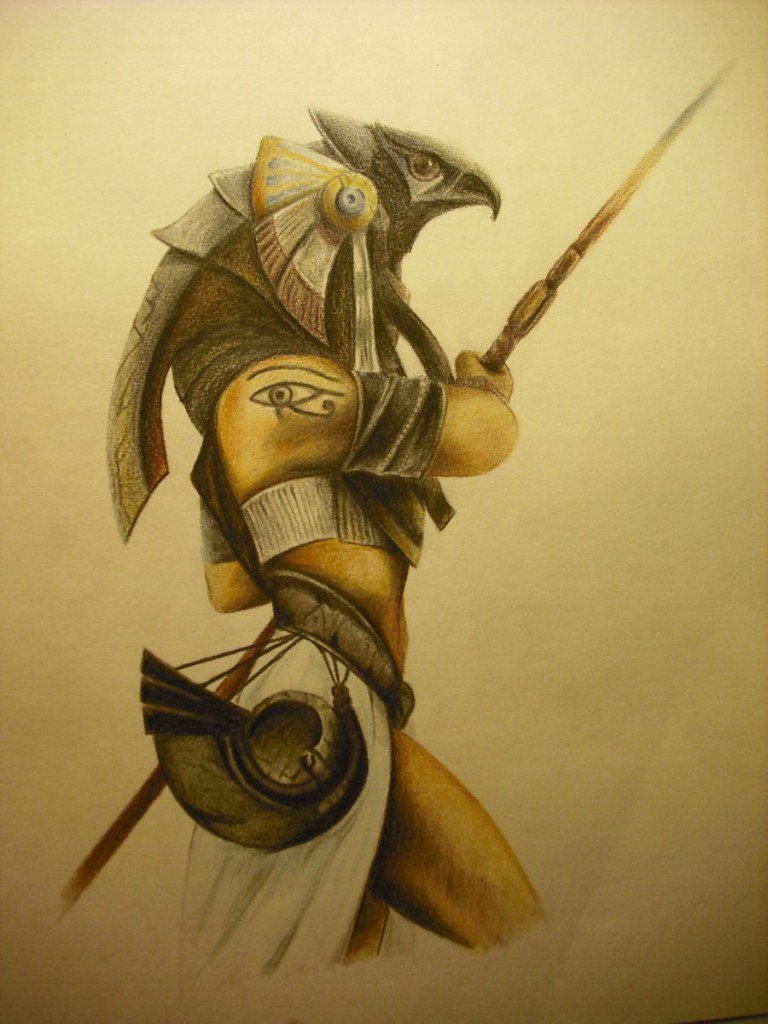 Horus
Horus
HORUS. Horus is super important in Egyptian mythology. He’s the god of the sun, the sky, and hunting, but also war and protection. He appears with the head of a falcon, and over the course of Ancient Egyptian history, he was often depicted as the national god of Egypt. BIG DEAL. A lot of people might also be familiar with the Eye of Horus, which looks like this:
The Eye of Horus is a symbol of protection, as well as good health and power.
(Image © SorenElrowien)
 Thoth
Thoth
The god Thoth fills many important roles in the Egyptian pantheon. He is the god of knowledge, of settling disputes, magic, writing, and science (magic AND science!). He is depicted with the head of an ibis or sometimes a baboon, both sacred animals to him. Most familiarly to me, Thoth is the keeper and originator of the Egyptian Book of the Dead, a book of spells used to aid souls on their journey to the afterlife. WORD.
(Image © sans-art)
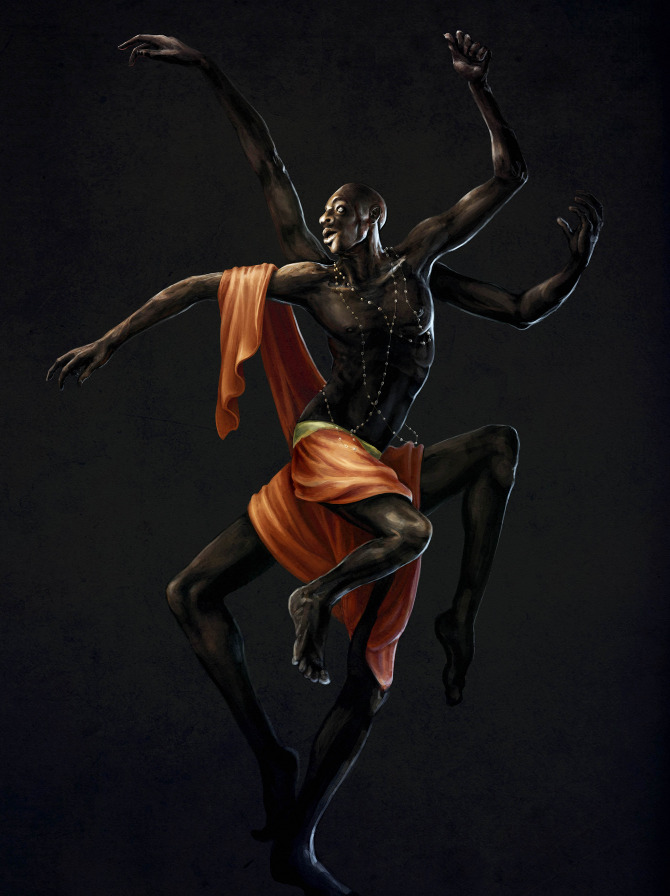 Anansi
Anansi
THIS PICTURE THO. So, Anansi is a god that originated in West Africa. He often appears as a spider, which is why he has so many awesome legs and arms in this picture. He came to the Caribbean and the Americas with African slaves, and is known as the god of stories. This might not sounds as important as other gods, but WHOA he’s super important, and not just because we all love stories. The oral traditions of storytelling are the foundation of every culture on the planet, so a god of stories is pivotal to the continuation of those cultures, as well as their histories, their people, their land, and their lives. BOOM.
(Image © Bethany Minervino)
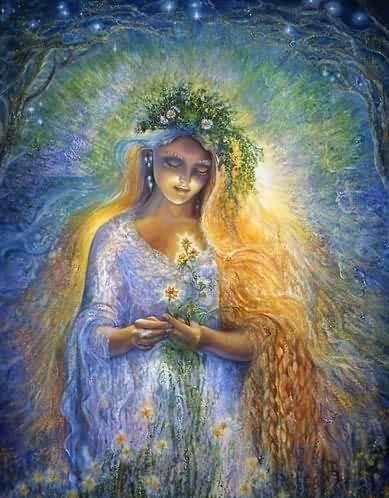 Eostre
Eostre
Ahh, what a lovely picture! Makes sense, since she’s associated with lots of lovely things. Eostre might sounds a little bit like Easter for those of you who practice, and that’s no accident. So you know how Christmas takes huge chunks of its defining characteristics from a pagan festival? Yeah. Easter, too. Eostre, or sometimes Ostara, is the goddess of spring, fertility, and the dawn. She’s associated with rabbits (you know, fertility and all). Pictures of her often feature rabbits, flowers, lots of greenery. She’s sometimes pregnant or very full-figured. She’s also one of the nicest goddesses in AMERICAN GODS.
(Couldn’t find an artist for this one)
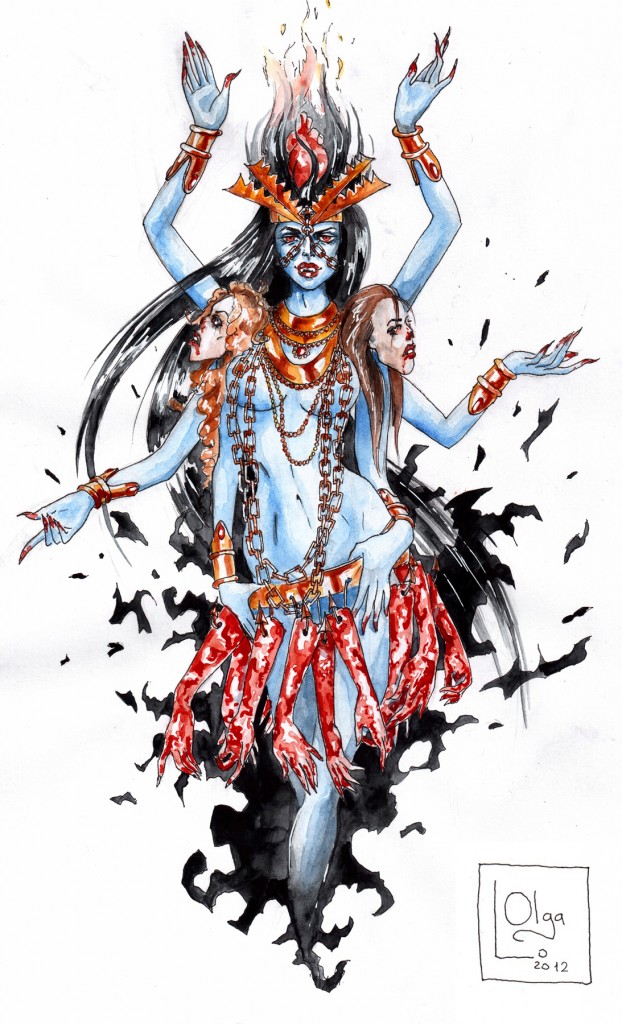 Kali
Kali
So we go from the lovely goddess of spring and fertility and baby-making to this badass bitch. Kali is the Hindu goddess of time, change, and destruction. She’s got extra arms that are all bloody and flinging swords. She’s got severed heads and arms and skulls in her hands and hanging from her belt. She’s the wife of the god Shiva, THE Hindu Big Kauna. In most images–although not this one–Kali is stepping on Shiva. Kali has many different facets–she can be destructive and deadly, or comforting and maternal. Mostly, though, she’s a deadly SOB.
(Image © OlgaLo)
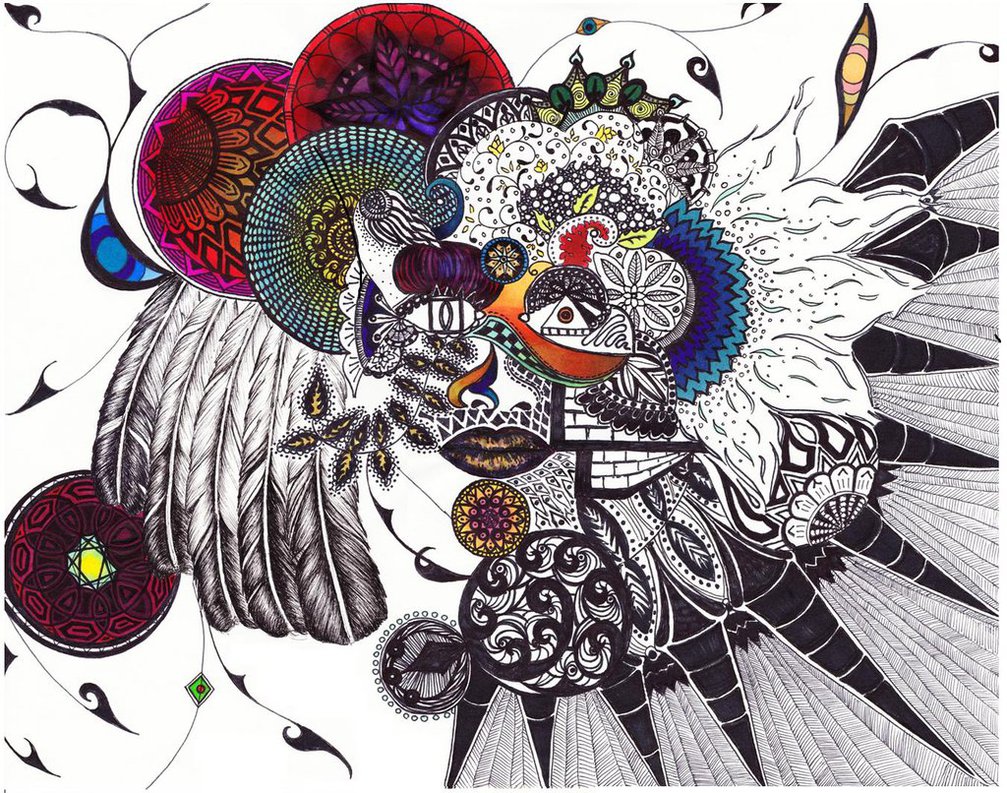 Wisakedjak
Wisakedjak
This is one of the more obscure gods in AMERICAN GODS, and it’s a Native American one. Various tribes native to America and Canada have a Wisakedjak figure. He’s a trickster god (yes, another one). His lore tells that he is responsible for a flood that destroyed the original world, and that he created this current world with magic. So that’s pretty cool.
I just want to pause in my god rundown to say that there are almost no gods in AMERICAN GODS that are actually American. Shadow has dreams often of a buffalo man who lives under the earth. He tells Shadow more than once, when asked who he is, that he is the land. There’s a really interesting conversation they have in Shadow’s dreams about how Native Americans don’t really have gods; they have the land. I wish I could remember this passage more clearly or find it in my book because it really struck me as so important to the Americanness of this story. It’s not an accident that the gods in this book all came to America with immigrants, and became new incarnations of themselves here.
(Image © lesleygoodyear)
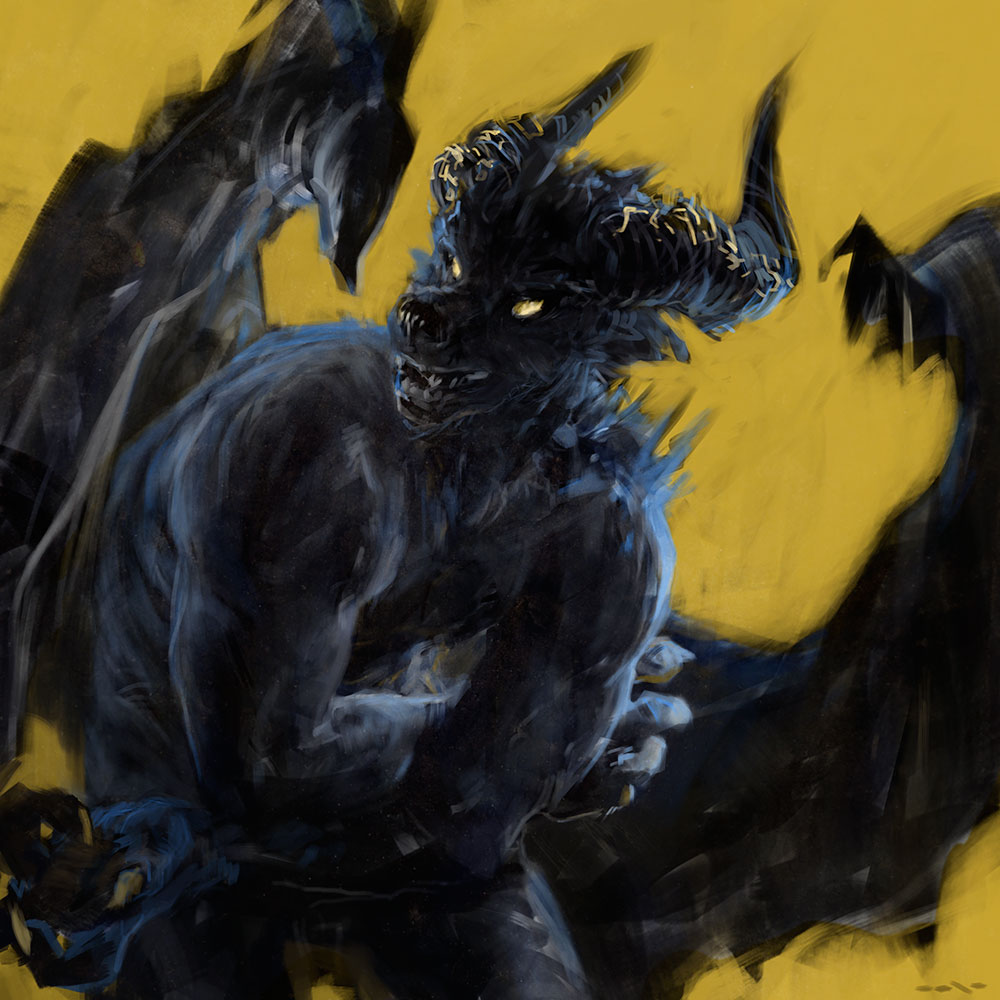 Czernobog
Czernobog
Czernobog is, as you may gather from this picture here, not a god that spreads warm-fuzzies. He is the dark counterpart to his brother, Bielobog. Czernobog is an Eastern European deity basically in charge of all the bad things ever. Kind of like the Devil. His twin and opposite, Bielobog, is the one with the warm-fuzzies. If you’re a Disney fan, and this image looks familiar to you, here’s why:
Czernobog was the scary bastard in Fantasia‘s “Night on Bald Mountain” sequence.
(Image © wahay)
There are other gods and mythological creatures in AMERICAN GODS, so don’t take this list to mean that there are no others. Some are just mentioned; others still play roles in Shadow’s story as he undertakes his post-prison job for the mysterious Mr. Wednesday. I loved AMERICAN GODS. I haven’t read many Neil Gaiman books, but this one might be my favorite so far. There are so many thought-provoking passages and excellent writing. The gods in this book have very human failings, and that’s fascinating. Definitely recommend!
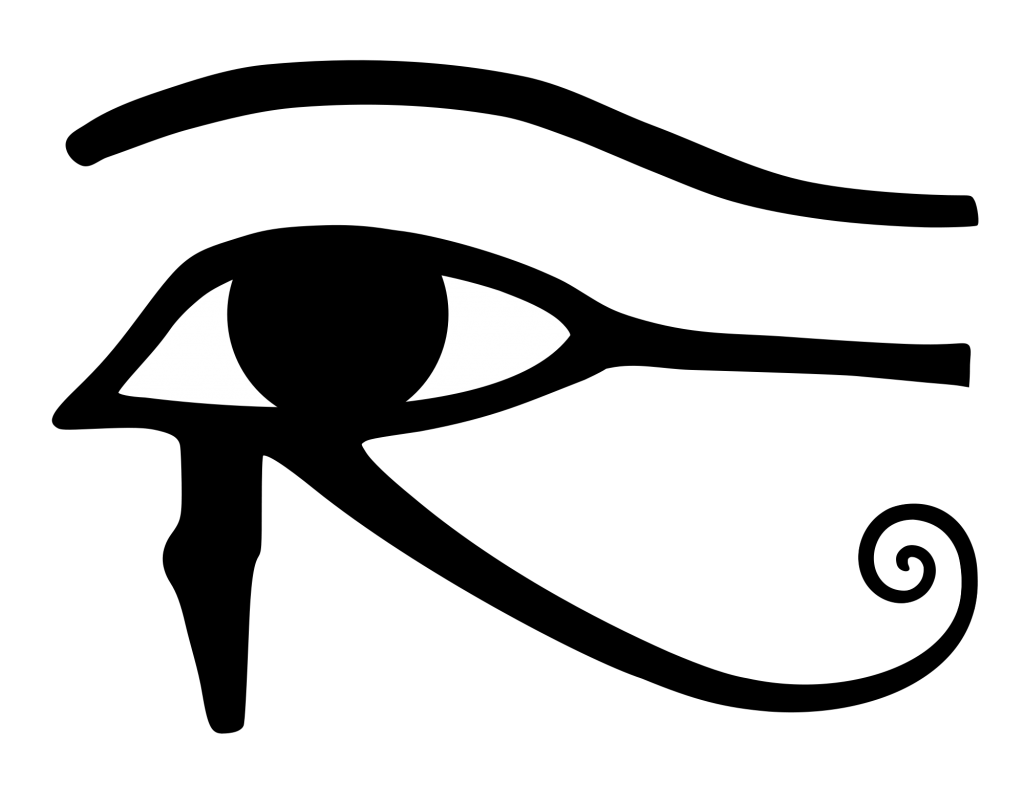
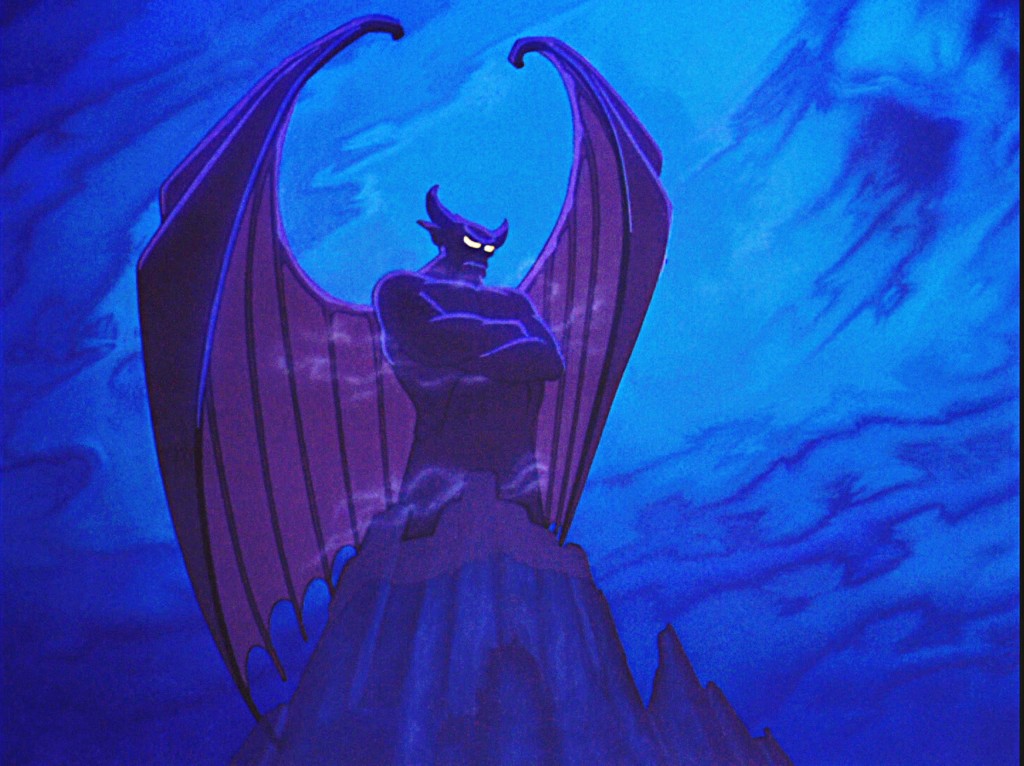




EXCELLENT post, Ame! I’m glad you did this — it was so cool to see the different gods in the “original” forms since we see the more humanized versions of them in the book.
Anubis <333 Horus <333 Thoth <333 Loved the Egyptian mythology!
Holy crap, amazing images of Anansi and Czernobog! SO cool. So glad you shared this! I am all *hearts in eyes* over this right now!
It’s so fascinating that so many gods are featured in American Gods! While I’m not entirely sure if I really want to read American Gods (though Alyssa might make a very convincing case for me to do so), I’m fascinated by the variety of gods that populate the tale. Thanks for sharing, A!